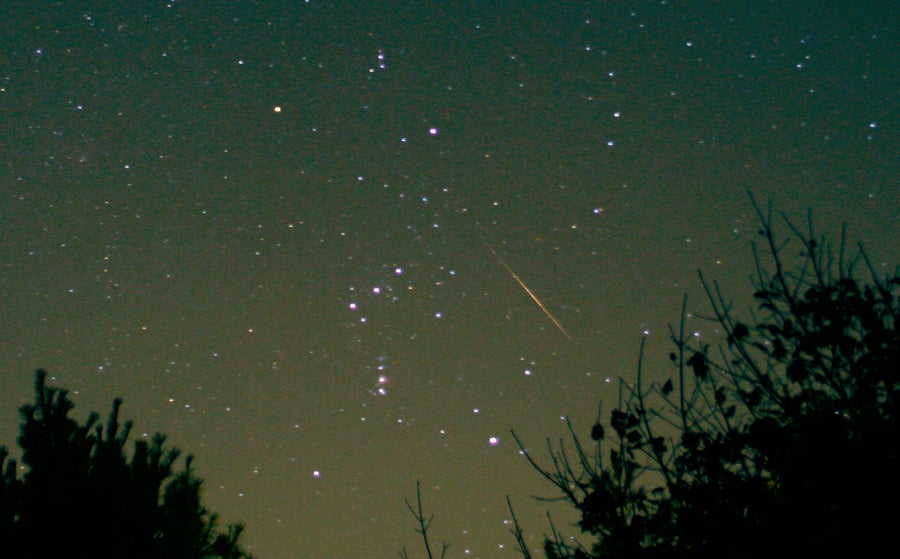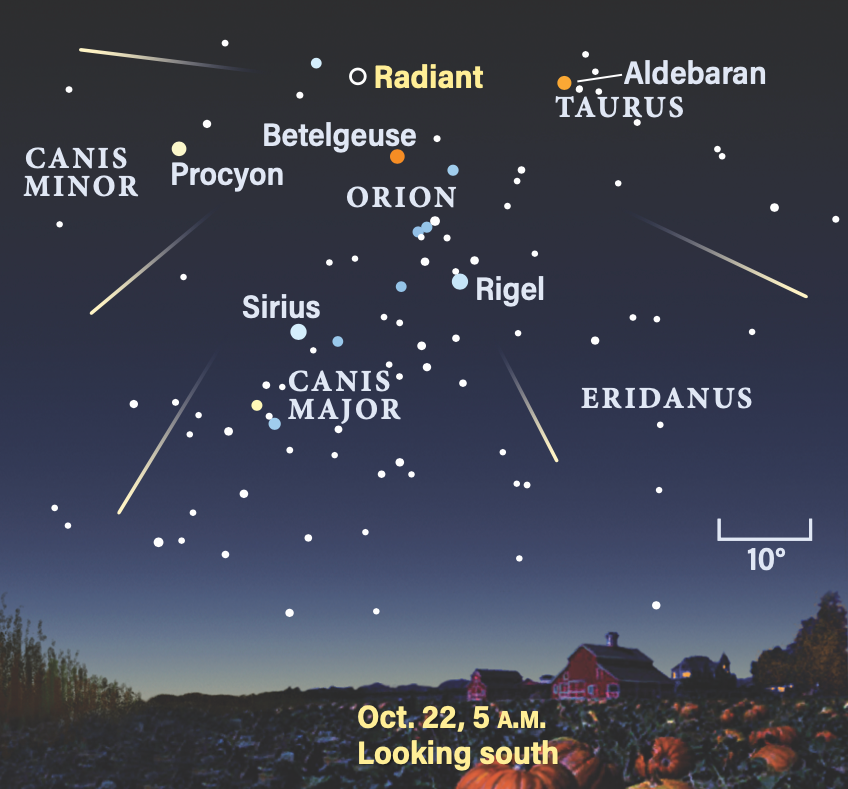
Orion the Hunter is one of the most recognizable constellations in the northern sky, thanks to his trademark three-star belt. He’s also associated with one of the most famous and meteor showers of the year, the Orionids. Now active, the Orionid meteor shower peaks this weekend, with the maximum number of meteors visible overnight from Saturday night through Sunday morning.
When to watch
Orion will appear above the horizon around 11 P.M. local daylight time on Saturday evening (the 21st). The constellation will rise in the east behind the V-shaped face of Taurus the Bull, and continue rising hour by hour overnight and into the early-morning hours of Sunday. That means your chances of observing more meteors increase with time into Sunday morning, with the best viewing times occurring between about 2 A.M. and sunrise on Sunday. Morning viewing is not only best because Orion will be higher, but also because during this time, you’re standing on the hemisphere of Earth that is facing into the debris stream as we pass through it, increasing the number of meteors that appear.
Just how many meteors will you see? The shower this year is expected to produce a maximum zenithal hourly rate of some 20 to 30 meteors per hour. This measure, however, assumes the radiant (and Orion) are directly overhead (at the zenith), which won’t occur during dark hours. More likely, you’ll see some 15 to 20 meteors per hour, or roughly one meteor every 3 minutes. Remember, however, that this is an average — you might see many meteors over a short period of time or fewer meteors for a long while at other times.

Where to watch
The best way to maximize the number of Orionids you’ll see is to spend a while outside looking all around the sky, typically about 45° to one side or the other of the radiant itself. That’s because shower meteors tend to emanate from the radiant and leave the shortest trails near this point in the sky. Meteors will have the longest, most impressive trails some distance away from the radiant.
So, find the constellation Orion in the east, then look somewhat south or north of the hourglass-shaped figure, rather than at the Hunter himself. Try looking just left of the heads of Gemini, marked by the bright stars Castor and Pollux, or toward Eridanus and Lepus, to the right of the bright star Rigel that marks one of Orion’s knees.
The radiant itself is located near Orion’s border with Gemini, about 10° northeast (to the left) of the bright red giant star Betelgeuse marking one of the Hunter’s shoulders. If you can recognize Gemini to Orion’s northeast, look about halfway between Orion’s Belt and the Twins’ midsections, and you’ll be close to the radiant.
Conditions are quite favorable this year, as the First Quarter Moon is setting just as Orion is rising on Saturday night, leaving the sky dark through morning twilight and increasing your chances of spotting even fainter meteors falling though the sky.
And remember, meteor showers require no tools to observe them at all — in fact, the very best way to watch is with your naked eyes, simply scanning the skies for bright flashes and streaks.
The Orionids’ origins
The Orionids are one of two meteor showers generated by debris left by the famous Comet Halley, which last passed through our neck of the solar system in 1986. As comets round the Sun, they leave behind trails of dust liberated from the surface by ices sublimating — turning directly from solid to gas — in the higher temperatures.
Because Halley’s last pass was so long ago, the Orionids have been relatively quiet in past years, producing fewer meteors than in the past. Nonetheless, these fast-moving meteors are still a wonderous sight to see, with the occasional fireball lighting up the sky as it arcs overhead.
With cooler temperatures starting to appear in the Northern Hemisphere, this favorite fall observing event is the perfect way to enjoy the night sky with nothing but your eyes.









